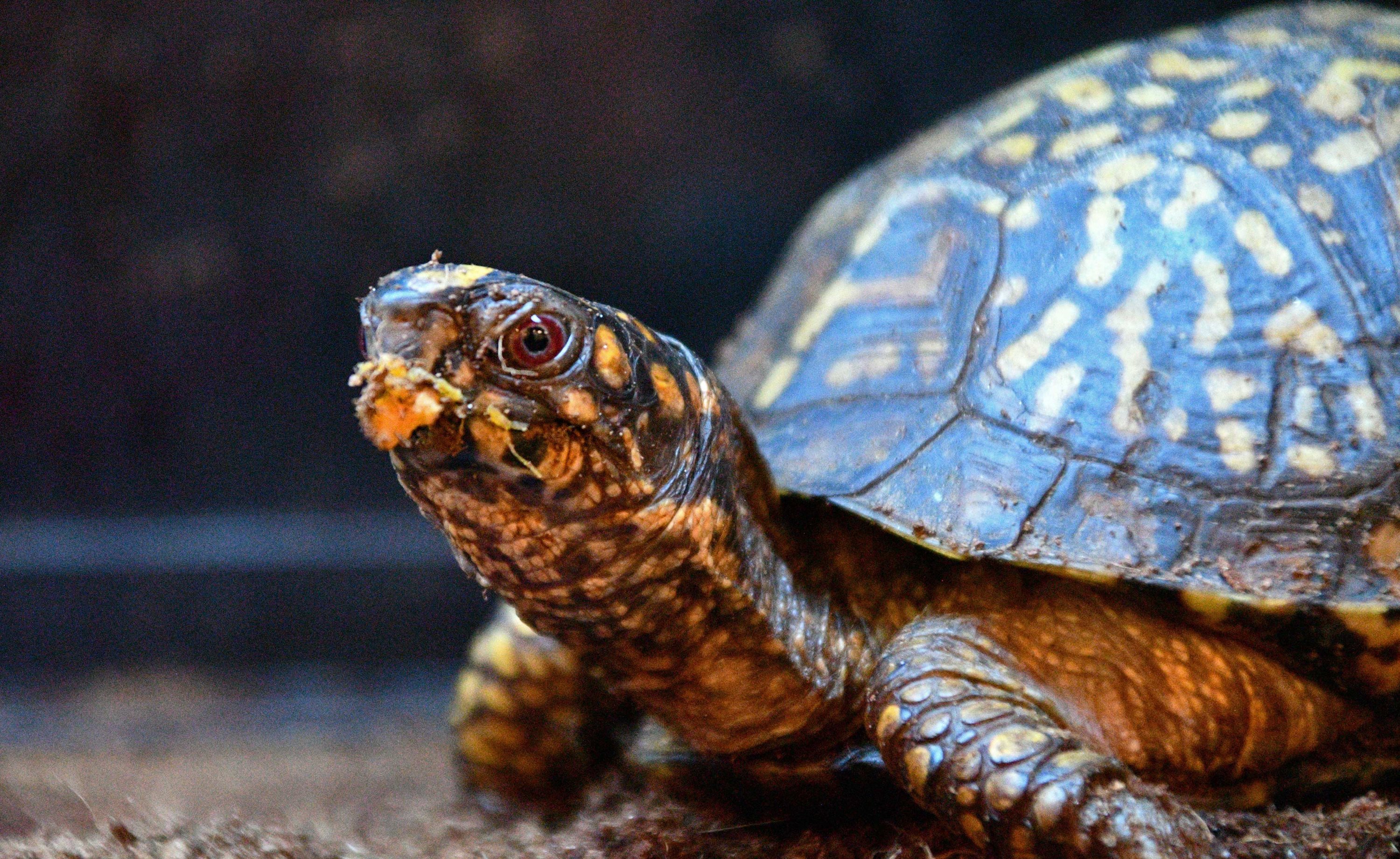| Story by Meghan McMahon |
8/26/2021
Nature has a way of balancing itself out, and turtles are an example of that. These reptiles are among the slowest creatures roaming the Earth, but their shells offer them the protection they need because their lack of speed leaves them exposed to danger from predators.
More than 200 species of turtles live across the world, but only 17 live in Illinois. Of those 17 species, 11 live in Will County, according to Forest Preserve District wildlife ecologist Becky Blankenship. Two Illinois turtle species — the Blanding’s turtle and spotted turtle — are state endangered. Another, the ornate box turtle, is state threatened. If you think you’ve seen a threatened or endangered animal in Illinois, you can report it to the Illinois Department of Natural Resources.
While endangered and threatened species have populations that have reached critically low levels, many turtles in Illinois are affected by habitat loss and alteration of habitats, according to IDNR. In addition, some turtle species are captured for the pet trade and some are overexploited for food.
There are a few things you can do to protect turtle populations wherever you live, Blankenship said. For starters, don’t collect turtles or their eggs from the wild. And don’t release pet turtles into the wild. (Note: It is a violation of the District’s General Use Ordinance to dump animals in the preserves.)
Taking it a step further, don’t let other pets, like cats and dogs, roam freely outdoors. Pets can spread parasites and disease in natural areas, and they prey on native wildlife, Blankenship said. Around your house, don’t feed wildlife of any kind, and avoid using mesh netting for erosion control because animals can become trapped or injured.
If you spot a turtle crossing the road, remove it from harm’s way if possible by placing it safely off the roadway in the direction it was traveling, Blankenship said. (And make sure to wash or sanitize your hands afterward.) If the turtle is heading away from water, trust that it knows what it is doing. Turtles often travel away from waterways to nest, and if you move it opposite of the direction it was traveling, it will likely start its journey over again.
If a roadway near your home is a place where turtles are often hit by cars, contact the government agency in charge of the roadway to inquire about getting a turtle crossing sign installed, Blankenship recommends.
Let’s take a closer look at the turtles that populate our local waterways. But first, some turtle basics. For example, a turtle’s shell actually has a few technical terms. The top of the shell is called the carapace, and the bottom is the plastron. Scutes are the bony plates that make up the carapace. The scutes are made of keratin, just like our hair and fingernails.
Most — but not all — of our local turtles are primarily aquatic, but it’s not unusual to see turtles out of the water, moving to or from a nearby nesting site. Turtles are also commonly seen basking, or sunning themselves, on rocks and logs surrounding waterways.
Here are more details about the 11 turtles that live in Will County.

)
)
)
)
)
)
)
)
)
)
)